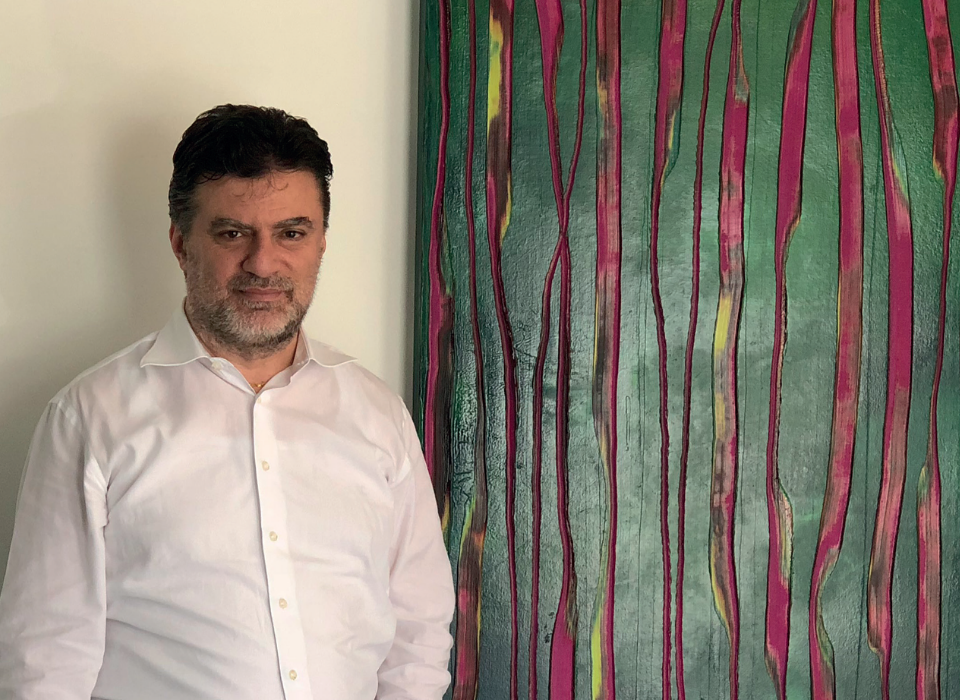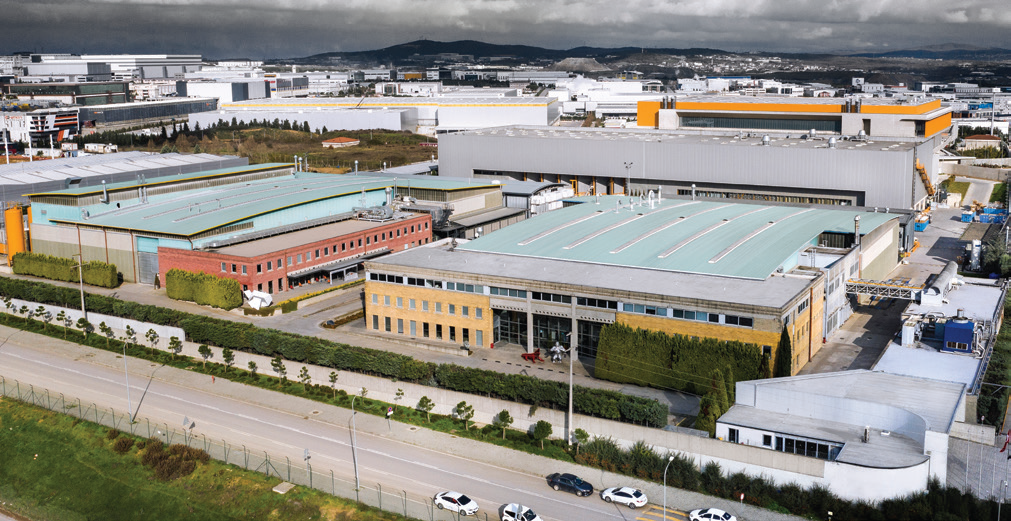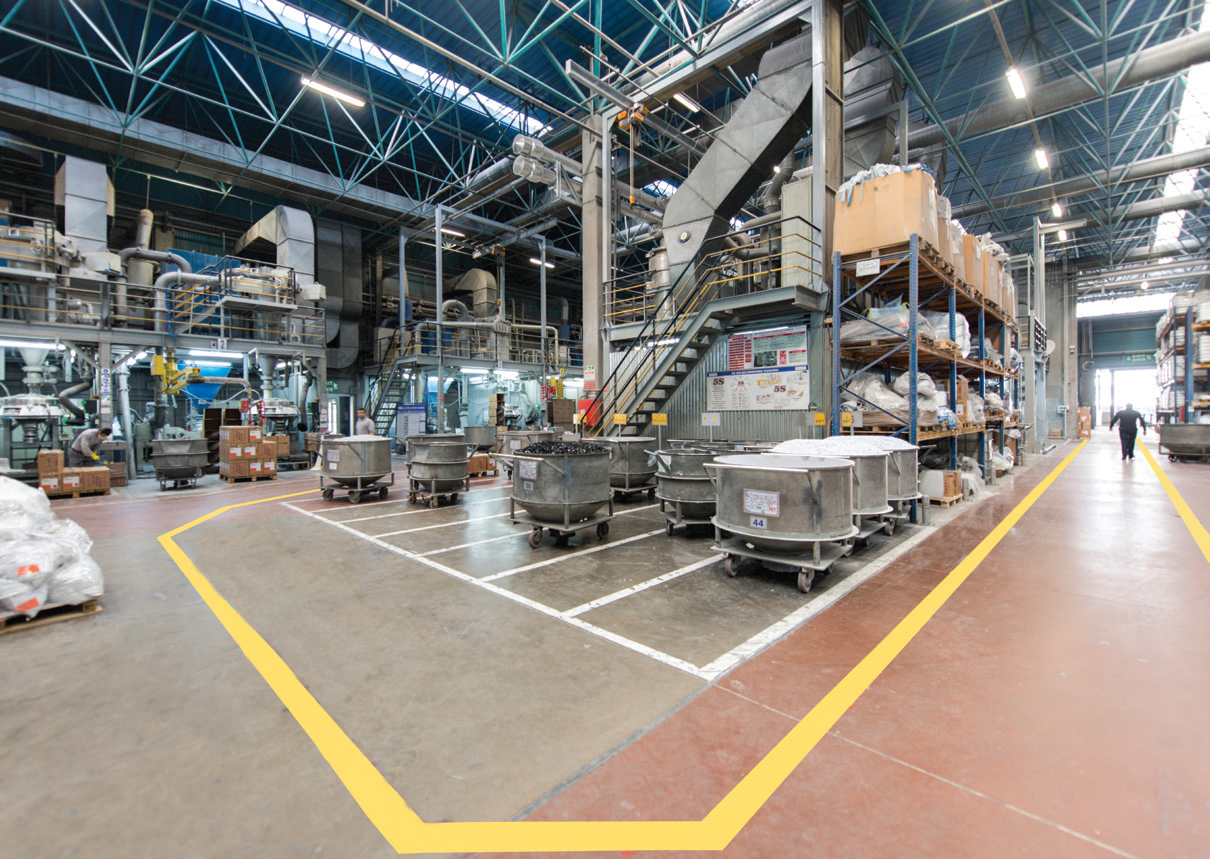
Interview by: Gamze Ünal
As one of Europe’s largest powder coating manufacturers, Pulver Kimya maintains its competitive edge through exceptional technical service and an extensive product range despite being the highest-priced supplier in the market. While focusing on architectural applications and emerging electric vehicle opportunities, the company is advancing its sustainability initiatives and developing lower-temperature powder coatings to meet growing energy efficiency demands.
As Pulver Kimya, you are one of the largest powder coating manufacturers in Europe. What strategy do you follow to maintain this success?
Being sustainable in today’s competitive conditions in the powder coating market is quite challenging. In our opinion, Pulver’s success lies in its “technical/commercial service before and after sales” and in “providing customers with ease of choice (broad product range/inventory/product catalogs).” Since our establishment in 1991, these two aspects have been indispensable for us, and we work very hard on them. Although the powder coating market is the supplier with the highest average price and the longest payment terms, Pulver is chosen because of these features.
The “Digital Color Card” project allows your customers to experience colors in a more accessible way. What kind of feedback have you received for this project? Are there any new features you plan to add?
We created the “Digital Color Card” project to reinforce our leadership/strength in product and color catalogs, and we have received very positive feedback. The Digital Color Card is especially preferred in architectural applications and is very helpful in providing remote service to our customers/architects. Among the important outcomes of our Digital Color Card project are its contributions to “increasing efficiency and reducing costs.”
Sustainability is becoming increasingly important in the powder coating industry. What steps are you taking as Pulver Kimya regarding sustainable production and environmentally friendly products?
Unfortunately, our country and the world have not yet reached maturity in terms of sustainability and environmental issues. Being a global company brings us demand from every corner of the world, but sadly, there is still no significant awareness regarding “environmentally friendly products.” Nevertheless, to be prepared for potential future demands/requirements, especially in Europe, we are rapidly developing the “Sustainability Report/Carbon Footprint” project that we have initiated together with our group companies.
Global disruptions in the supply chain have negatively affected many sectors. How did you support your customers during this period as Pulver Kimya?
I can say that the powder coating sector was not significantly affected by these disruptions (at least for Pulver). Our network, which reaches all over the world, our ability to source raw materials from various alternatives, and our sales office/distributor network enabled us not only to avoid harm from these disruptions but also to turn the situation to our advantage.
Pulver Kimya’s product range includes architectural, industrial, white goods, automotive, and Pulron thermoplastic powder coatings. Which of these segments is in highest demand? In which sector have you observed a growth trend recently?
The “Architectural” powder coatings, which we have focused on since the 1990s, are the product segment we sell/serve the most to our customers. Especially the Aluminum Exterior Cladding industry has always been our focus, particularly since we obtained our first Qualicoat certificate in 1995. We believe this sector will continue to grow worldwide. Recently, we have also seen that powder coating can be a solution for many parts of “electric vehicles,” especially batteries, and that there is a visible growth trend. We are working in detail on this topic and developing projects.
What innovative features do your powder coatings for the automotive sector offer in terms of durability and aesthetics?
Powder coating can be used in almost every part of automotive vehicles except the car body, in many spare parts, that is, by the “aftermarket.” Here, functionality and long-term durability are more important than aesthetics. The areas we serve as Pulver include shock absorber springs, engine blocks, seat rails, wipers, wheels, and many spare parts under the hood/invisible sections. Looking at the geographies we serve, we see that a large part of our sales in Germany is to the automotive industry.
How do the powder coatings you have developed for the white goods sector provide advantages to manufacturers in terms of both aesthetics and functionality?
Recently, the products we have been working on are mostly focused on functionality. The products are expected to pass various and rigorous chemical-corrosion tests. In terms of aesthetics, we see that “to a small extent” metallic-gray colors are being designed. Unfortunately, this sector is also heavily affected by “cost/profitability” factors, and the chaos of “highest quality/lowest cost” is one of today’s problems. The white goods sector helps us more in terms of prestige and reducing general expenses than in profit.
We see that competition in the powder coating sector is increasing. Does Pulver Kimya have any new investments or expansion projects planned to strengthen its position in the global market?
Powder coating is not a new industry for the world, unfortunately. It has become an aging, easily copied industry. Of course, it is possible to design many new products, but these products, which are produced/sold only for prestige and do not have high sales, have almost no impact on turnover and profit. Rather than strengthening our position in the global market, we are working very hard to maintain our position, and we are especially focusing more on projects to increase efficiency and reduce costs.
What innovations do you think will stand out in the sector in the near future? Can you share which topics Pulver Kimya’s R&D efforts are primarily focused on?
The most talked-about topics today are “energy saving” and “long-lasting durable products.” Of course, these two topics, also triggered by “Sustainability/Carbon Footprint” efforts, will continue to be a major focus in the near future. “Energy saving” is a topic we are also very focused on. The baking temperature of powder coating is decreasing every day and will continue to decrease. While baking conditions of 200°C were discussed in the 1990s, world standards dropped to 180°C after 2010, and today, products at 160°C are being discussed/designed. In a recent seminar we attended, we saw that one of the raw material suppliers will push for temperatures of 110°C and below.
For “long-lasting durable products,” we are constantly striving to develop products with “Polyester” chemistry, which is preferred by the Architectural-Aluminum sector. We are particularly meticulous about certifying our products with Qualicoat and GSB, and we are making great efforts to increase the number of certificates.
What are your strategies to increase brand awareness in markets such as Europe and the USA? Can you provide information about Pulver Kimya’s growth targets, especially in foreign markets?
Pulver’s main focuses in foreign markets are Russia (+ Russian-speaking CIS countries) and Germany. We have been present in Russia since 1996. Due to the size of the geography, we now have sales offices, sales staff, and warehouses in 10 different locations. Germany is another strong region for us. In Germany, we are active especially in functional product groups (automotive, white goods, etc.).
Due to the withdrawal of European companies from the region because of the war in Russia, our sales have increased. Unfortunately, sad developments in the world can sometimes lead to increased sales in certain regions. While there is stagnation/recession in Western Europe under current conditions, our focus/presence in Eastern Europe, North Africa, and Middle Eastern countries, where we are strong in exports and continue to grow, is increasing day by day.